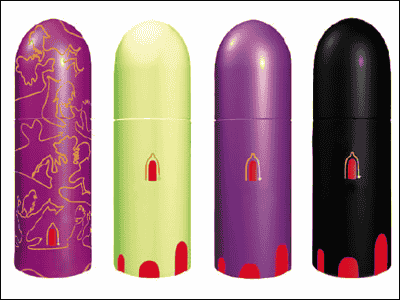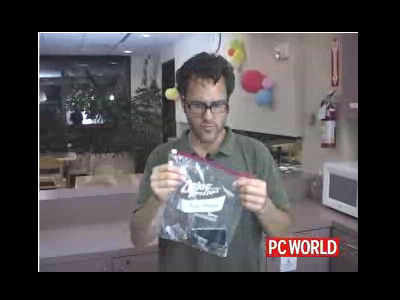Can the heat of a flamethrower be prevented by a high-performance insulation blanket that is only 1cm thin?

Flamethrower vs Aerogel-YouTube
It is Mr. Derek Muller of a science-based YouTuber who confirms the thermal insulation of airgel in this movie. Standing behind is Dr. Stephan Steiner, an airgel expert.
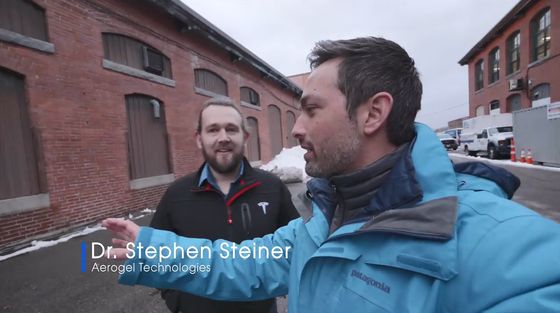
The blanket touched by Dr. Steiner is '
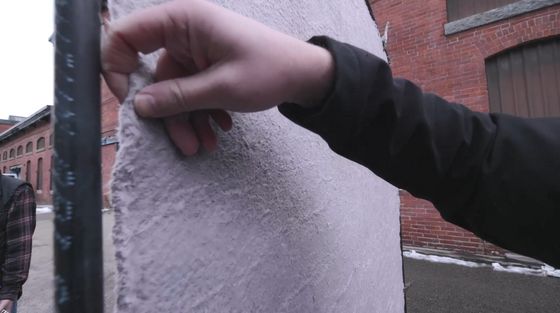
In general, silica airgel is very light, thin and bluish.

If you look at the silica airgel at the nanoscale, you can see that it is a sponge-like object with numerous holes of tens of
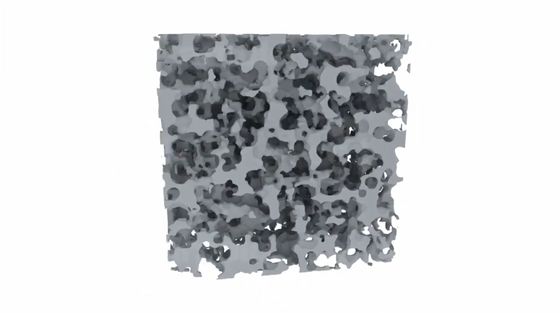
Since air has a very low thermal conductivity, silica aerogels with a maximum of 99.8% of air due to the myriad nanoscale holes will have a very high thermal insulation performance.

However, the structure of silica airgel itself is fragile, so it cannot be used as a heat insulating material in this form. So after crushing the silica airgel ...
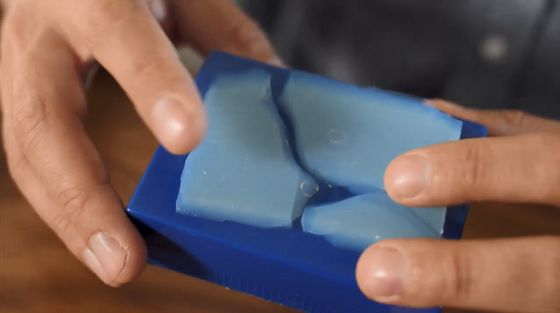
By impregnating a blanket etc., it is said that high performance heat insulating material is created.

The flamethrower
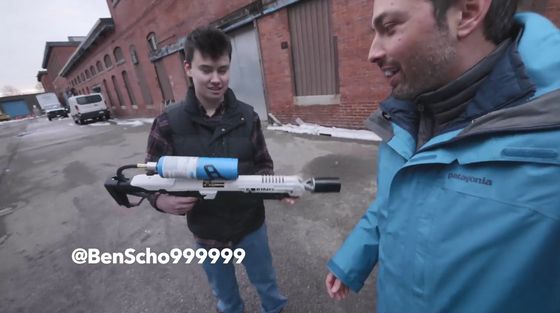
The check method is a stretched body in which a flamethrower emits flame from one side of the blanket and Mr. Mueller stands on the other side.
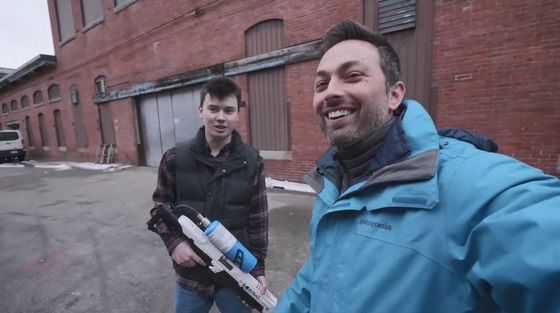
We also measure heat using the
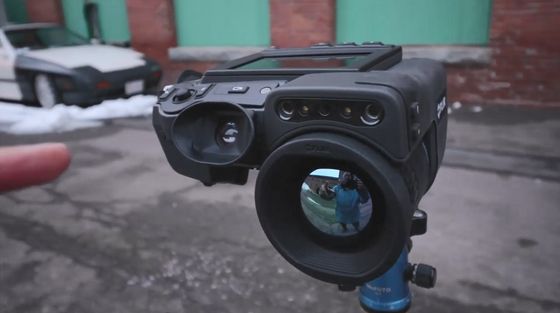
What is the momentum of the flamethrower used in the test, used for chocolate?
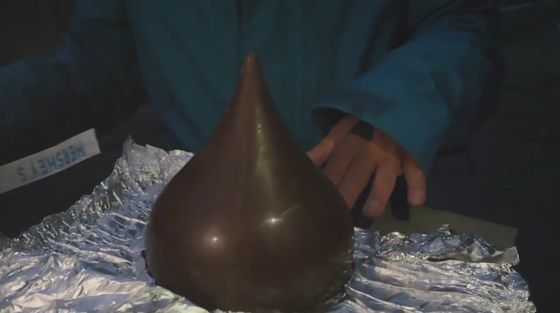
The chocolate was surprisingly kept in shape for several tens of seconds, with the impression that it was burnt and hardened before it melted, but eventually the top part collapsed.
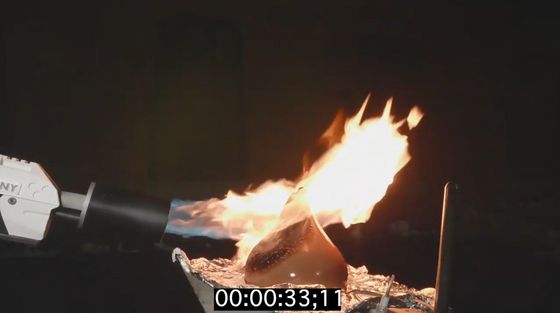
The fire continued to burn even after the flame was stopped.
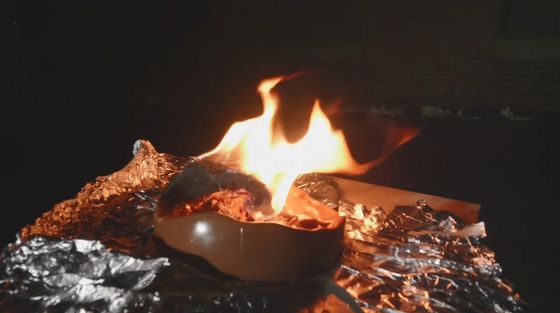
Even standing on the back of the blanket seems like a dangerous experiment ...

Mr. Mueller puts his palm directly on the back of the blanket and tries to experience the heat.

Mr. Ben holding a flamethrower across a blanket of only 1cm, and Mr. Mueller who put his hand on the blanket.
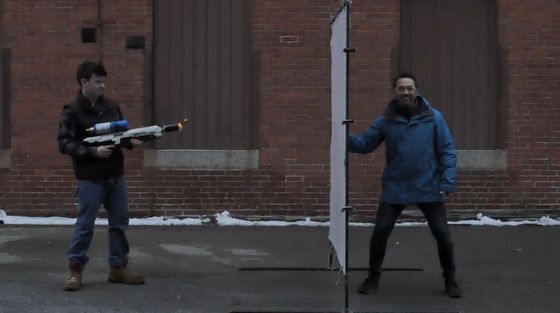
Finally, Mr. Ben radiates fire.

If you look at the image of the thermo camera, you can see that the heat is blocked by the blanket.
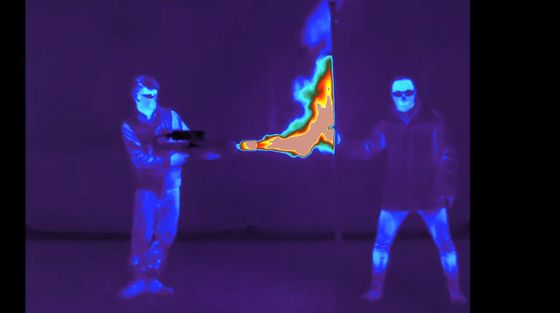
Mr. Ben gets closer to the beginning, but Mr. Müller still has a palm.

“Please come over here. I do n’t feel any heat,” says Müller.
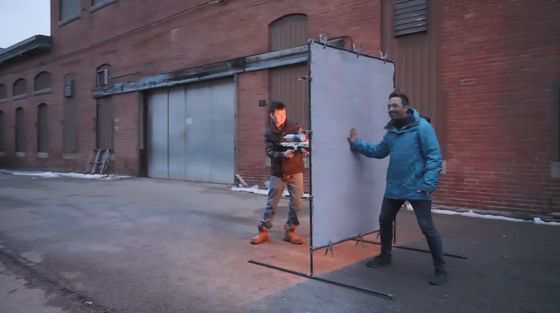
Mr. Müller is saying 'Is it a little warm?' With a generous voice, but a flamethrower is blowing flames just 1cm away.
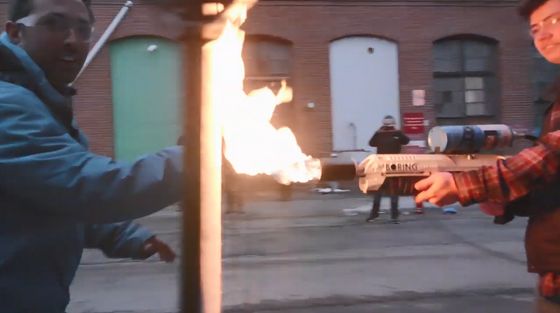
Mr. Mueller, who should have experimented with the power of insulation, laughs saying 'I can't believe it!'

Mr. Müller laughs pointing at the flames from the top of the blanket.
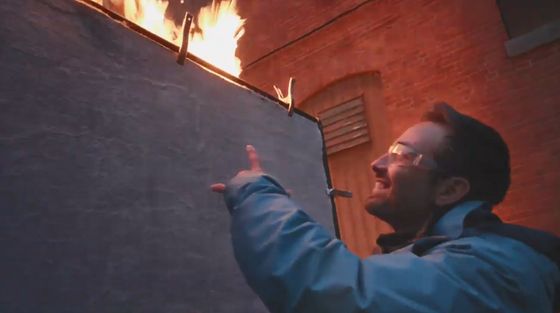
The heat that Mr. Muller touches is at most 50 degrees Celsius, but ...
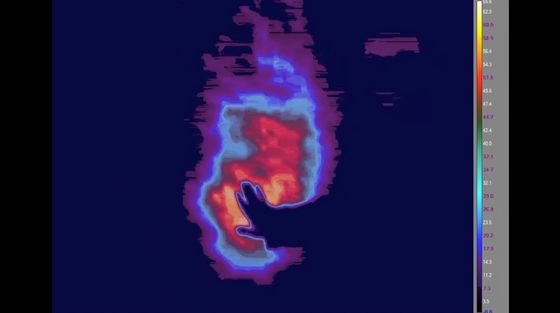
The other side of the blanket is heated to nearly 600 degrees.

Even after quitting the flame emission, the blanket was still displayed as over 150 degrees.

However, Mr. Müller who turned to the other side seems to have been able to touch the blanket for some reason.

If you touch an object that is 100 degrees, you might get burned, but Mr. Mueller is touching the blanket. Müller and colleagues will reveal why they can do this in the second experiment.

In the second experiment, a 1 mm thick silica airgel coating was applied to the hot plate. Part where the brown ground is visible is the part that was not coated for comparison.
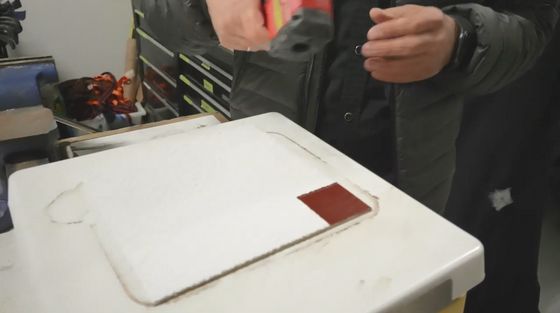
Heat in this state and raise the temperature rapidly.
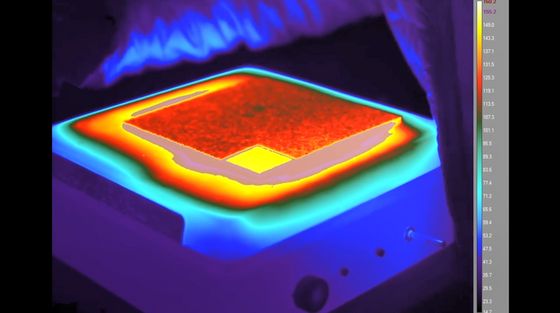
The instrument shows that the surface temperature of the coated part is over 120 degrees.
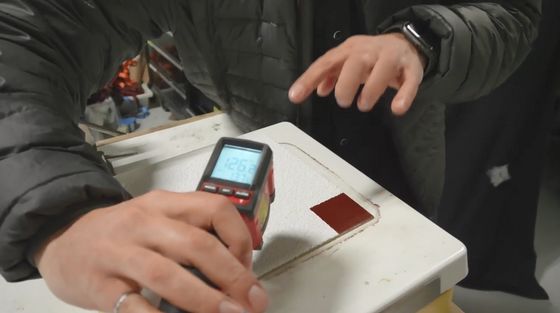
Mr. Müller was able to put his hands together.
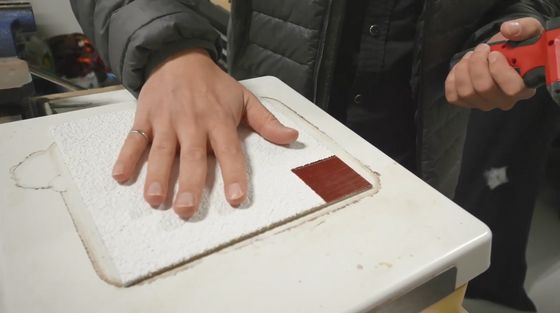
Looking at the image from the thermocamera, it seems that Mr. Müller is placing his hand on a plate close to 130 degrees.
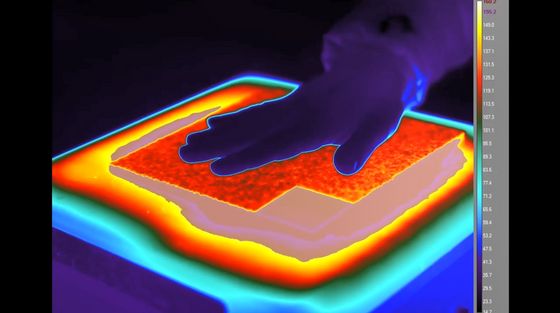
However, “I feel the heat but I feel it is not 130 degrees,” Müller comments.

When Mr. Müller took his hand, the hand had a low-temperature part. This is because Müller's palm is cooler than the inside of the airgel coating and the coating is cooled.
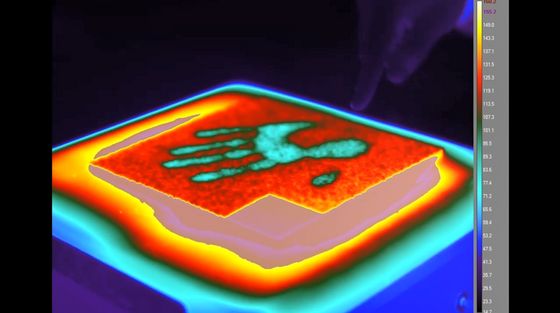
By the way, the exposed part of the metal plate is about 180 degrees. Although it is a little hotter than when the coating part was measured, it is not so different.

If you try water on a part without a coating as a test, the water will naturally boil and boil.
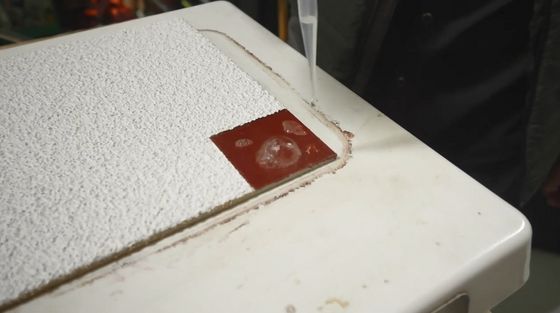
On the other hand, the water dripped into the coating does not boil and the temperature remains low.
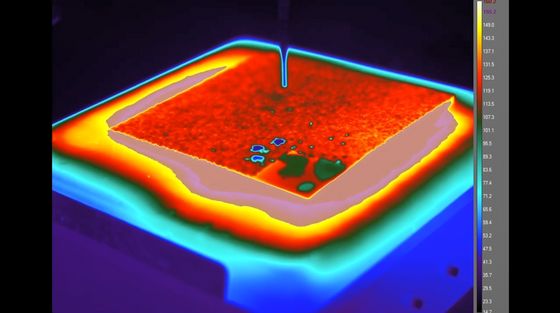
Although it is a coating of only 1mm, it seems to block the heat that can easily boil water to a level that is harmless to the human body.
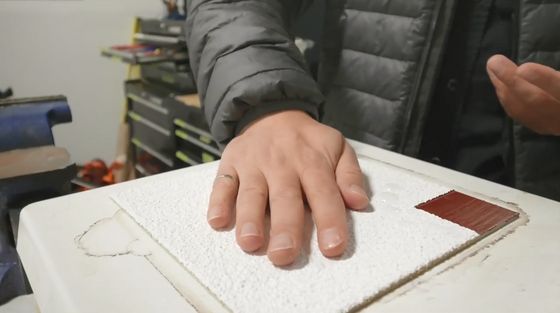
Insulation using silica airgel works even at ultra-low temperatures ...
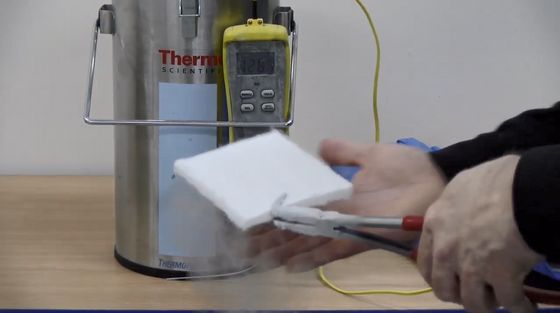
You can also touch the insulation frozen with liquid nitrogen with your bare hands.
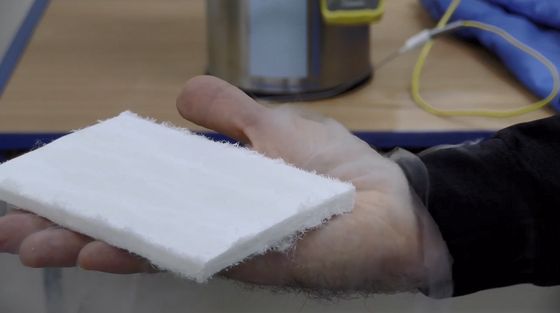
For this reason, thermal insulation using silica airgel can be used in facilities that flow ultra-low temperature fluids, etc ...
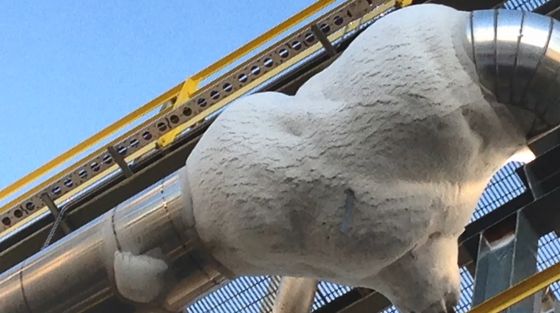
It is also used for NASA space development.

There are also ski jackets that use airgel in the pockets so that they will not freeze even when a smartphone is inserted.

The battle between the flamethrower and the silica gel airgel insulation blanket ...
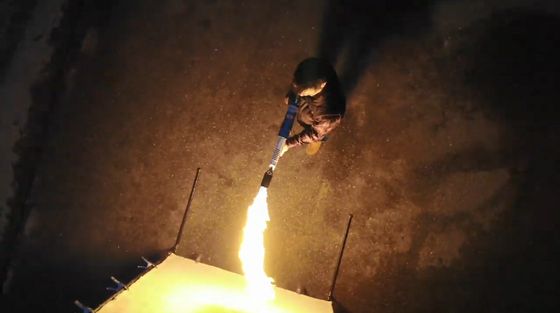
Eventually, the flamethrower ran out of fuel.

“Airgel wins,” Müller said.

Related Posts:
